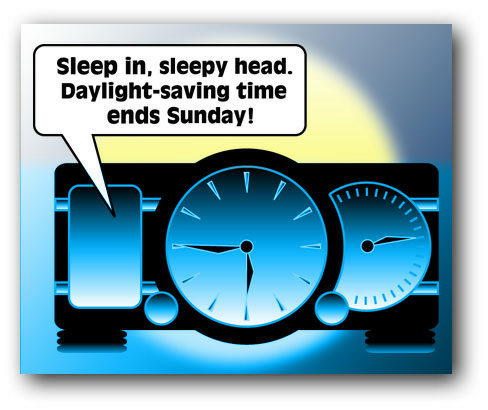
You can’t save daylight by moving around the hands on your clock, of course. So daylight saving time remains as absurdly named as it ever was.
As for saving energy, DST doesn’t do that either, according to most studies, as I noted earlier this year. An Australian study concluded "These results suggest that current plans and proposals to extend DST will fail to conserve energy." A recent study, in fact, found DST "may actually waste energy":
Up until two years ago, only 15 of Indiana’s 92 counties set their clocks an hour ahead in the spring and an hour back in the fall. The rest stayed on standard time all year, in part because farmers resisted the prospect of having to work an extra hour in the morning dark. But many residents came to hate falling in and out of sync with businesses and residents in neighboring states and prevailed upon the Indiana Legislature to put the entire state on daylight-saving time beginning in the spring of 2006.
Indiana’s change of heart gave University of California-Santa Barbara economics professor Matthew Kotchen and Ph.D. student Laura Grant a unique way to see how the time shift affects energy use. Using more than seven million monthly meter readings from Duke Energy Corp., covering nearly all the households in southern Indiana for three years, they were able to compare energy consumption before and after counties began observing daylight-saving time. Readings from counties that had already adopted daylight-saving time provided a control group that helped them to adjust for changes in weather from one year to the next.
Their finding: Having the entire state switch to daylight-saving time each year, rather than stay on standard time, costs Indiana households an additional $8.6 million in electricity bills. They conclude that the reduced cost of lighting in afternoons during daylight-saving time is more than offset by the higher air-conditioning costs on hot afternoons and increased heating costs on cool mornings.
"I’ve never had a paper with such a clear and unambiguous finding as this," says Mr. Kotchen, who presented the paper at a National Bureau of Economic Research conference this month.
A 2007 study by economists Hendrik Wolff and Ryan Kellogg of the temporary extension of daylight-saving in two Australian territories for the 2000 Summer Olympics also suggested the clock change increases energy use.
Wikipedia lists a bunch of other studies on DST, most of which (but not all) come to a similar conclusion.
Enjoy your extra hour of sleep tonight!


